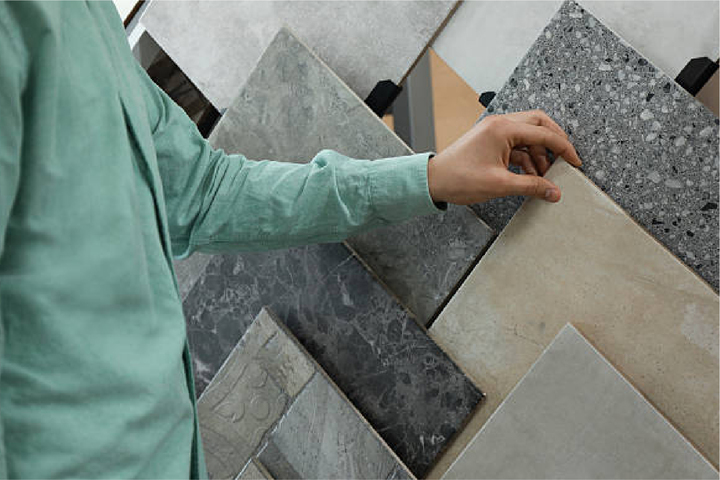Floors and water have never been great friends—but in some rooms, they don’t have a choice. Kitchens, bathrooms, laundry areas, even entryways—these are the spaces where spills, splashes, and humidity are part of daily life. And if your flooring isn’t built to handle moisture, you are one small leak away from swelling, warping, or worse.
However, waterproof flooring makes all the difference—not just water-resistant, but truly waterproof. The kind of flooring that doesn’t flinch when soaked, doesn’t buckle with steam, and still manages to look good doing it. We are talking about materials like SPC vinyl, waterproof laminate, and hybrid core options that combine hard-wearing construction with design that actually fits your space.
In this guide, we are getting specific. We’ll break down the best waterproof flooring options available right now—what they are made of, where they work best, how they hold up over time, and what to watch out for when buying. If you are flooring a busy home, a rental, or a commercial space in Arizona’s dry heat (with the occasional plumbing surprise), this is for you.
Where Do You Install Waterproof Flooring?
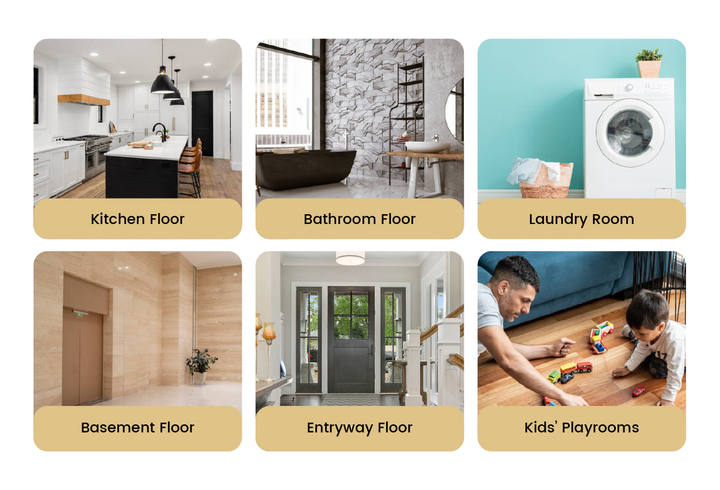
In spots where spills happen or the air stays damp, waterproof floors perform best. This type of flooring won’t swell, crack, or lose its look over time.
1. Bathrooms – The Obvious First Choice 🛁
Every day life in a bathroom involves water, lots of it. Steam from the shower, sinks splash, and tubs sometimes overflow. All of this makes it essential to have flooring that won’t bulge, peel, or break down under constant exposure.
Best waterproof options here:
- Luxury vinyl plank (LVP) with a rigid core (SPC or WPC)
- Porcelain tile with slip-resistant texture
- Sheet vinyl for seamless water protection
Modern waterproof floors also have anti-slip coatings. So you are not just dealing with moisture, you are making the space safer, too.
2. Kitchens – Where Spills Are Just Normal 🍳
A kitchen handles more than just cooking. Daily life spills into it, literally. Sauces overflow, the ice maker may leave a puddle, and every now and then, the dishwasher leaks.
And the worst part? Most of the mess happens without you even realizing it until hours later. That’s why you need a floor that doesn’t soak up the damage.
Why waterproof flooring matters in kitchens:
- Resists water penetration under cabinets and appliances
- Prevents warping from heat and humidity
- Allows for quick clean-up with no staining.
Pro tip: Go for LVP with a wear layer of at least 20 mils for high traffic and resistance to dents, stains, and scratches.
🧺 3. Laundry Rooms – Overflow City
If you’ve ever had a washer overflow or a burst hose, you already know why moisture protection in your laundry room isn’t optional. Humidity can also be an issue here, especially if your laundry area lacks ventilation.
Ideal waterproof features to look for:
- Tight click-lock installation to block water seepage
- Waterproof underlayment for added moisture barrier
- Mold-resistant backing layer for subfloor protection
A lot of homeowners don’t realize how much water can actually leak under traditional flooring in this space until it’s too late, and by then, you are dealing with rot, mold, or a soft floor that smells musty.
4. Basements – Constant Battle with Humidity 🧱
Basements tend to be damp by nature. In many homes, they are the first place to suffer from water seepage or even small-scale flooding. So, it makes sense to choose a flooring type that can truly handle those conditions.
We are not just talking about basic water resistance, that won’t cut it. For basements, especially those turned into bedrooms or restrooms, you’ll need something that holds up under constant pressure. It should stand strong against both surface spills and hydrostatic pressure from below.
Best options for basement installs:
- Stone polymer core (SPC) vinyl flooring
- Porcelain or ceramic tile with waterproof grout
- Rubber flooring (great for home gyms or playrooms)
A vapor barrier under the floor can be a small step that makes a big difference, especially when laid on top of concrete. It helps stop moisture from soaking in from underneath.
5. Entryways, Foyers & Mudrooms – First Line of Defense 🚪
Heavy rain, dirty boots, snow dripping off shoes, it all hits your floors the second someone walks through the door. Entryways and mudrooms get the worst of it. That’s why you need durable flooring that can handle grit, water, and constant foot traffic without giving up too soon.
Waterproof flooring here ensures:
- No swelling or softening from puddles
- Quick drying and easy cleaning
- Better resistance to scratches from sand or gravel
And if your home has a pet that likes to track in water or mud, trust me, you’ll thank yourself for going waterproof in these areas.
6. Kids’ Playrooms or Daycare Zones – Accidents Happen 👶
You may not think of this space immediately, but playrooms are full of unpredictable messes. From spilled juice to potty-training accidents, these rooms benefit big time from stain-resistant and waterproof flooring.
What to prioritize here:
- Soft, safe surfaces (like rubber tiles or cushioned vinyl)
- Seamless installation to prevent liquid from seeping through
- Anti-microbial surface treatments for hygiene
Waterproof floors don’t just make cleaning easier—they help you maintain a healthier indoor environment.
6 Different Types of Waterproof Flooring for Your Place
Waterproof flooring is a smart pick for your home. We’ll walk through the leading waterproof flooring options in 2025. Every type comes with its own practical edge.
1. Luxury Vinyl Plank (LVP) & Luxury Vinyl Tile (LVT)

(100% Waterproof – Versatile & Budget-Friendly)
Luxury Vinyl is honestly one of the most practical waterproof flooring solutions available today. It mimics hardwood and tile perfectly, but what sets it apart is its waterproof layered construction.
- Core Material: Most modern LVP uses either WPC (wood plastic composite) or SPC (stone plastic composite) cores. SPC is denser, more durable, and offers better dimensional stability, meaning it doesn’t expand or contract as much.
- Surface Layer: A UV-cured wear layer protects the floor from scratches, stains, and sun damage.
- Installation: DIY-friendly click-lock systems snap together over underlayment—no glue needed.
- Moisture Resistance: The core and wear layers are both waterproof, meaning they won’t absorb water or swell if exposed to spills or leaks.
- Common Uses: Kitchens, bathrooms, basements, hallways, and rental units.

🔧 Important Tip: Look for LVP with at least a 20 mil wear layer if you’ve got kids or pets. It adds extra protection against daily abuse.
2. Waterproof Laminate Flooring

(Water-Resistant Core + Realistic Look of Wood)
Laminate flooring used to be a no-go in wet areas—until now. New-gen waterproof laminate is engineered with advanced sealed locking systems and hydrophobic coatings to repel water for extended periods.
- Core Structure: Unlike old versions, waterproof laminate uses a high-density fiberboard (HDF) core treated for moisture resistance.
- Edge Sealing: The planks are often sealed around the edges to prevent water from seeping through the seams.
- Visuals: The embossed texture and high-resolution wood grain imaging make this almost the same as real hardwood.
- Moisture Tolerance: Is capable of small spillage or mopping, but can not withstand standing water.
- Best Uses: Living rooms, bedrooms, dining areas, and even open-plan kitchens.

⚠️ Disclaimer: It is not floodproof but water resistant. Vinyl or tile continues to be the safer choice even when you anticipate a lot of exposure to water (e.g, in the bathroom).
3. Porcelain and Ceramic Tile
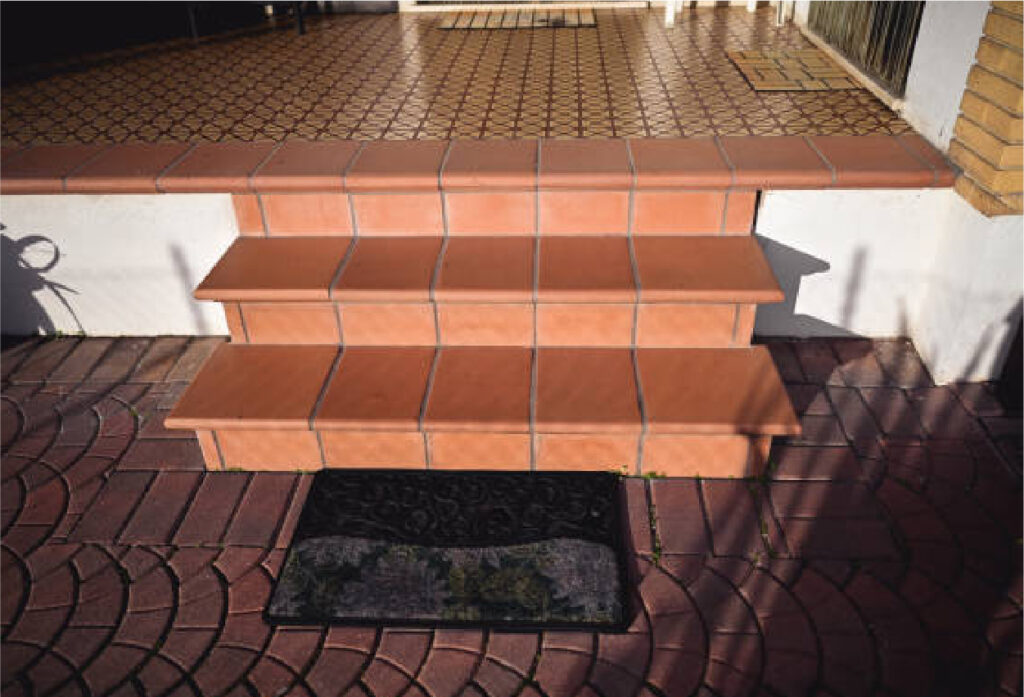
(Naturally Waterproof – Built to Last)
You’ve probably seen porcelain or ceramic tiles in bathrooms or kitchens. There’s a reason for that. They are crafted by firing clay at super high heat, which locks in strength and seals out moisture, so they last a long time and handle water like a pro.

- Waterproof Rating: Porcelain doesn’t soak in much water; its rate stays under 0.5%. So you can count on it to resist moisture almost entirely.
- Grout Consideration: The tile part handles water well, though you’ll still need to seal the grout. Otherwise, water can sneak through those lines.
- Durability: Built to last, it resists things like scratches, strong sunlight, and even fire. Heavy foot traffic? No problem. It fits both cozy homes and larger public areas.
- Slip Resistance: Many options include a slip-resistant surface now. That’s helpful around wet areas like showers or outdoor decks.
- Common Uses: Bathrooms, mudrooms, entryways, kitchens, and patios.
💡 Bonus: Tiles are compatible with radiant floor heating, which is a huge win for cold climates.
4. Natural Stone Flooring (Slate, Granite, Marble, Travertine)
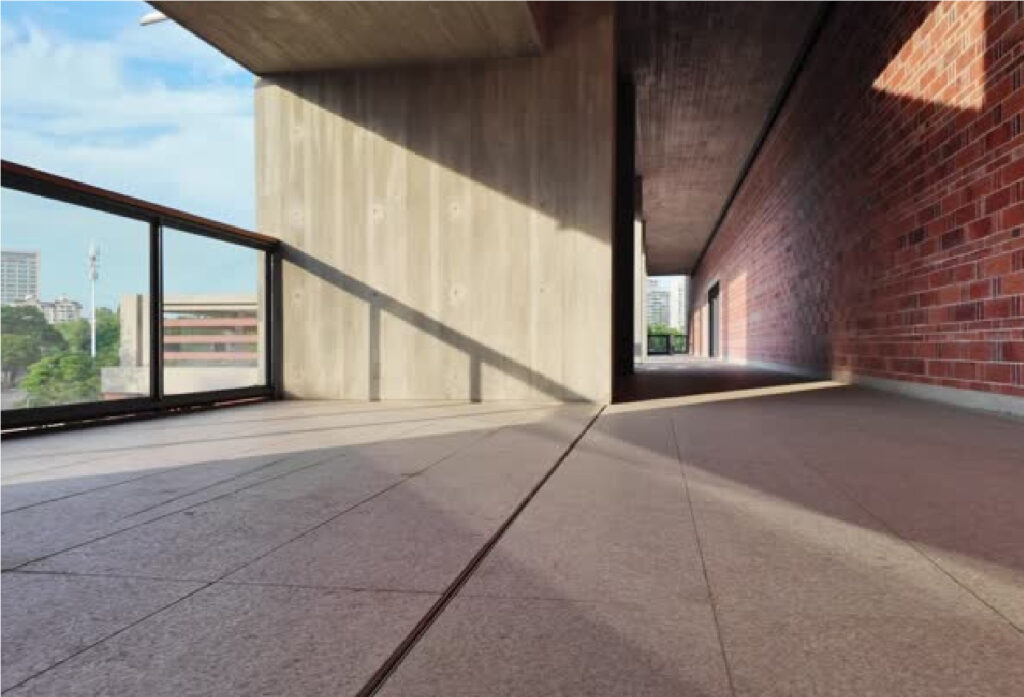
(Waterproof & High-End, But Needs Maintenance)
Stone is inherently water-resistant, though again, this may depend on the type, and may retain micro-pores to be sealed. Stone is luxurious and long-lasting when well taken care of.
- The Type of Stone Matters: Slate and granite can withstand more liquid than porous stones such as travertine.
- Installation: Cannot be self-installed, weight and cutting need precision.
- Maintenance: Has to be periodically sealed to prevent the ingress of moisture and stains, particularly in high-humidity regions.
- Durability: Very durable, and can chip in case heavy objects fall on top of it.
- Applications: Bathroom luxury, kitchen luxury, foyer rooms, and external pathways.
🌿 Eco Note: Stone is selected by a large number of homeowners due to its natural and sustainable look, and it is locally sourced.
5. Sheet Vinyl Flooring

(Seamless Water Protection – Great for Tight Budgets)
Sheet vinyl is an often overlooked waterproof hero. It comes in large, continuous rolls, meaning very few seams, which is a big deal when it comes to moisture protection.
- Construction: It’s made from flexible layers of PVC with a printed top layer and urethane coating for durability.
- Installation: Can be glued down or loose-laid. The fewer seams you have, the better the water resistance.
- Waterproof Qualities: Because there are minimal seams, water has nowhere to seep through, making it perfect for flood-prone spaces.
- Design Flexibility: Offers a range of styles from stone looks to classic wood tones.
- Common Uses: Bathrooms, laundry rooms, rental properties, and mobile homes.
💸 Affordability Factor: This is one of the most budget-conscious waterproof options available, both in material and installation cost. Not only this, but there are more flooring options you can get within your budget.
6. Rubber Flooring
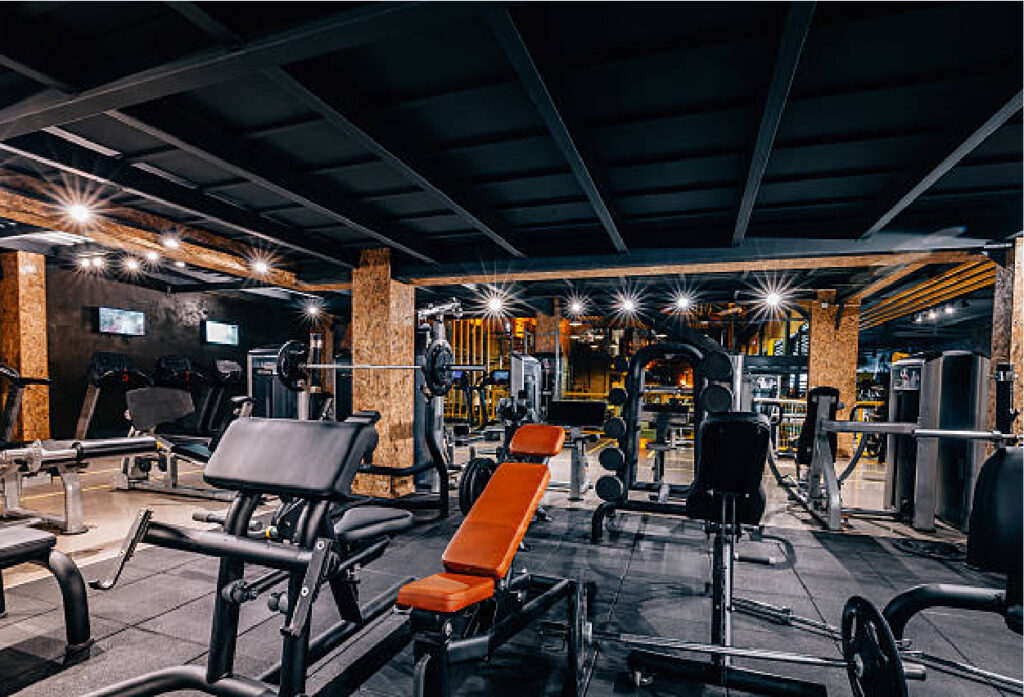
(Slip-Resistant, Shock-Absorbing, and Fully Waterproof)
You may not initially think of rubber as a potential residential flooring material, but it is 100 percent waterproof and extremely tough. Gym floors, play areas, and any place where safety or durability is of importance.
- Composition: Usually made from recycled rubber or synthetic rubber (like EPDM).
- Moisture Performance: Water just beads on top—there’s no absorption at all.
- Surface Grip: Offers excellent slip resistance, even when wet.
- Comfort: Naturally cushioned underfoot, which reduces fatigue and injury risk.
- Common Uses: Home gyms, kids’ playrooms, laundry areas, garages, and healthcare environments.
♻️ Eco Bonus: Many rubber flooring products are made from recycled tires, so they are a green choice too.
Quick Comparison of Different Types of Waterproof Flooring
Here’s a comparison table to help you quickly evaluate your options:
| Flooring Type | Waterproof Level | Durability | Style Variety | Comfort |
| Luxury Vinyl Plank (LVP) | 100% Waterproof | High | Excellent | Moderate |
| Waterproof Laminate | Water-Resistant | Moderate-High | Good | Hight |
| Porcelain/Ceramic Tile | 100% Waterproof | Very high | Excellent | Low |
| Natural Stone | 100% Waterproof | Very high | Moderate | Low |
| Sheet Vinyl | Waterproof | Moderate | Good | High |
| Rubber Flooring | Waterproof | High | low | Very High |
Waterproof Flooring Cost in 2025
The price of waterproof flooring in 2025 will largely be determined by the material type, as well as its installation and quality in general (particularly core construction and wear layer thickness). You can expect to pay an average of 2 to 10 dollars per square foot of materials only. For example,
- Normal cost of SPC rigid core vinyl plank flooring is between 3$ and 5$/sq. Ft.
- Whereas the high-end porcelain tile may go up to 7-10/sq. ft. or even more.
When figuring out the cost to floor a full job, you should include the cost of installation, which typically raises the price by a range of 2 to 6 dollars per square foot, and this depends on any kind of subfloor preparation work required, the form and layout of the work, and cost of labor to your region.
The least expensive waterproof flooring is sheet vinyl, and custom-cut, sealed natural stone is at the top with its high prices.
And don’t forget the extras, underlayment, transition strips, and even moisture barriers, can slightly raise your total. But honestly, investing in a waterproof floor now means less risk of costly repairs from water damage down the road.
Flooring You Need to Avoid in Wet Areas
The flooring might look great for a few weeks, but soon you’ll be dealing with swelling, warping, peeling, or worse, mold and mildew issues that sneak under the surface.
Here’s what you should seriously avoid in wet zones like bathrooms, laundry rooms, basements, and mudrooms:
1. Standard Laminate Flooring
This one’s tricky. While it may look like a waterproof option, standard laminate has a fiberboard core that’s highly sensitive to water. The moment water seeps into the seams, the planks start bubbling and expanding. And once it swells, there’s no going back.
2. Solid Hardwood Flooring
Moisture and hardwood simply do not relate well together. Even closed, the high-humidity or standing water may cause the wood to cup, crown, or buckle. You may also observe separated planks over time, which might be a result of the wood swelling and contraction.
3. Carpet Flooring
A carpet in a bathroom or basement is just asking to get in trouble, come on. It captures moisture, promotes the development of molds, and retains a dirty, damp smell. Even artificially made ones will not dry quickly, even in humidity-prone areas.
4. Cork Flooring
Cork is porous in nature, and therefore, it is highly absorptive unless forcefully sealed. And then, in high-moisture environments, it may swell irregularly or begin to rot inward to outward.
5. Engineered Wood with a Thin Veneer
Not all engineered hardwood is moisture resistant, with some labeled as such, they can be susceptible, especially when it is in the form of a mere thin veneer. When moisture gets through the surface, the fiberboard or plywood under the lattice is apt to begin swelling or delaminating.
But Hardwood flooring is quite a suitable option for your bedrooms, living areas, and so, explore its different shades to match your furniture as well as your walls.
How to Choose the Best Waterproof Flooring for Your Needs
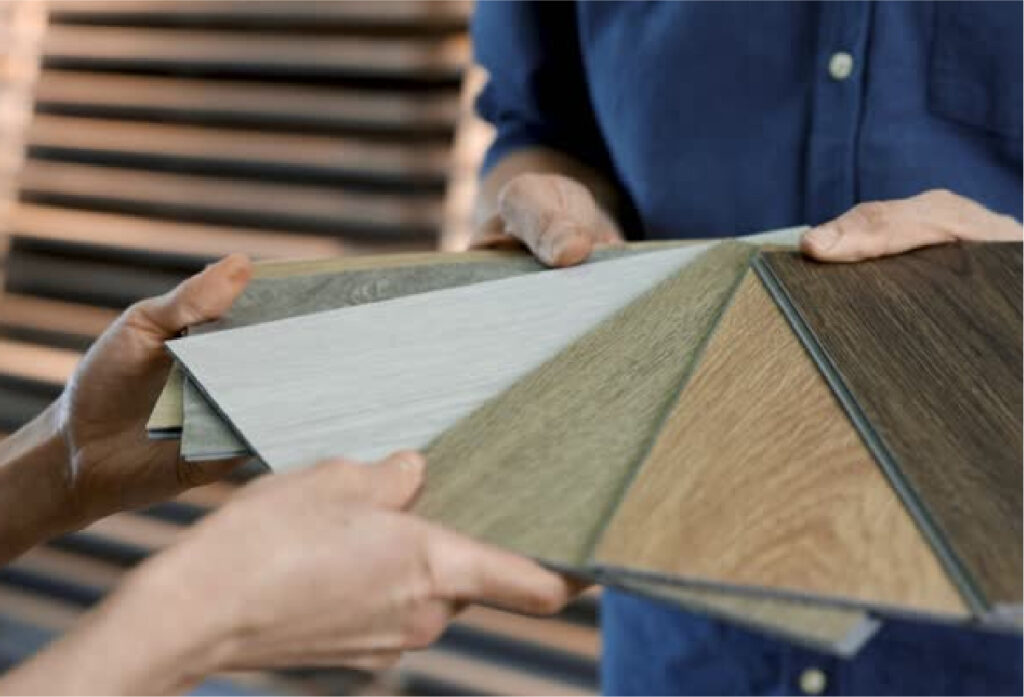
When selecting the right waterproof flooring, consider these key factors:
- Moisture Level of the Room: High-humidity areas like bathrooms or basements demand 100% waterproof materials like tile or vinyl.
- Foot Traffic: Busy spaces like kitchens or entryways need durable flooring like LVP or tile.
- Comfort Underfoot: Rubber and vinyl offer softness and shock absorption, ideal for playrooms and laundry areas.
- Style Preferences: Want the look of hardwood? Go for LVP. Prefer modern and sleek? Porcelain tile offers great design options.
- Budget: Set a budget that includes installation, underlayment, and finishing costs. Sheet vinyl is great for tight budgets; natural stone suits luxury upgrades.
How Long Does Waterproof Flooring Last?
The real lifespan of waterproof flooring is the dependence on the material, the installation method, and the intensity of daily wear and tear. Typically, the best such as SPC luxury vinyl plank or porcelain tile could last between 20-50 years, particularly with a thick wear layer (20 mil or above), and when maintained well.
Sheet vinyl or waterproof laminate products normally have a lifespan of typically 10 to 20 years, which is determined by the density of the product core and edge-sealing innovation.
And seriously, floor maintenance, such as drying up spills promptly, using gentle cleaning agents, not injuring the floor with heavy furniture, and putting protective pads under furniture, the more years you will spend on the same floor.
Furthermore, recently, most brands have added lifetime waterproof warranties, particularly for rigid-core vinyl and ceramic tile, which is an excellent indication of their anticipated longevity. Therefore, yes, waterproof flooring can be long-term, provided you choose the right one.
The Bottom Line
Flooring is a good investment that raises the resale value of a property and lowers the overall future maintenance effort, because it is waterproof. In busy traffic or otherwise wet places, it makes all the difference between everyday headaches and a smooth life.
No matter your style or space, we have a flooring solution that is just right to fit in your home. Give us a call at (+1) 480-487-4649—our flooring experts will guide you to pick the right floors for your space.

